In today's fast-paced and often noisy work environments, understanding and implementing effective hearing conservation practices is essential for a healthy and productive workforce. Here's a comprehensive guide to help you ensure the well-being of your employees.
Understanding Audiometric Testing
Employers are tasked with the responsibility of instituting a comprehensive audiometric testing program, accessible at no cost to the employee. This program isn't just a series of tests; it's a journey that begins with a baseline audiogram, continues with annual assessments, and is enriched with educational components and meticulous follow-up procedures. These steps are vital, for the initial audiogram serves as a cornerstone, capturing an accurate snapshot of an employee's hearing, which is crucial for early detection and intervention.
In the realm of workplace health and safety, guided by OSHA's regulations outlined in 29 CFR, the essence of audiometric testing goes beyond mere compliance. It embodies a dedication to preserving the hearing well-being of employees exposed to noise levels of 85 decibels or higher during their 8-hour workday. This mandate isn't just about following rules; it's about nurturing a culture where the welfare of each individual is paramount.
This initiative is more than a preventive measure; it offers hope to those at risk of hearing loss, offering a pathway to uncover the nuances of their condition and opening doors to tailored treatment solutions. OSHA's vision is clear—empower employers to not only protect but also enhance the quality of life for their workforce through proactive auditory health measures.
Audiometric Testing is critical in monitoring and protecting employees' hearing, particularly in industries with high noise levels. It involves evaluating an employee's hearing capacity over time for early detection of hearing impairment and prompt intervention.
Significance of OSHA’s Hearing Conservation Program
OSHA's Hearing Conservation Program sets the standard for protecting workers from noise-induced hearing loss. It encompasses various aspects, including noise exposure assessment, audiometric testing, hearing protection, employee training, and recordkeeping. Familiarizing yourself with these guidelines ensures compliance and safeguarding your employees' hearing health.
Implement Baseline and Annual Audiograms
The process begins with a baseline audiogram as a reference point for future hearing assessments. Subsequent annual audiograms are essential for tracking any changes in hearing ability. Timely and accurate audiometric testing is key to identifying potential hearing loss early and taking necessary preventive measures.
Post-Test Protocols
Following audiometric testing, it's crucial to have protocols in place for addressing any identified hearing issues. This includes providing suitable hearing protection, notifying employees of any standard threshold shifts, and recommending further medical evaluation if needed.
Select the Right Hearing Protection
Choosing appropriate hearing protection is vital. Options vary from earplugs to earmuffs, and the right choice depends on factors like noise levels, comfort, and user preference. Ensuring employees are trained on the proper use and maintenance of these devices is crucial to maximize their effectiveness.
Training
Educating employees about the risks of noise exposure and the importance of hearing conservation is a key component of a successful program. Training should cover the use and care of hearing protection, understanding audiometric testing, and ways to minimize noise exposure.
Recordkeeping
Maintaining accurate records of noise exposure and audiometric test results is not only a regulatory requirement but also a best practice for monitoring the auditory health of your workforce. These records can provide valuable insights for improving workplace noise control measures.
We can help
Managing the intricacies of audiometric testing and hearing conservation programs can be challenging. We can streamline this process, ensuring your employees' accuracy, compliance, and health.
By staying informed and proactive, you can create a safer, healthier workplace that values and protects one of your most important assets – the hearing health of your workforce. Get in touch with Workplace Safety Screenings today.

.png?width=500&height=500&name=Blue%20and%20White%20Classic%20Shield%20Financial%20with%20Star%20Logo%20Design%20(1).png)


